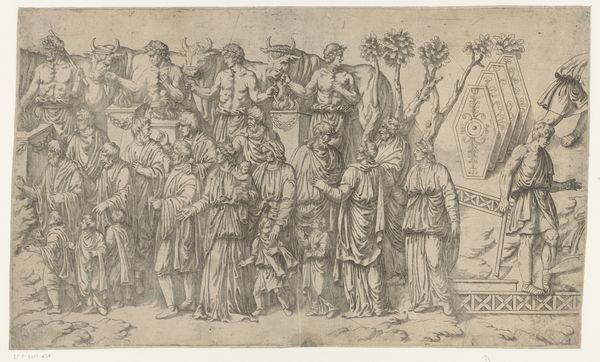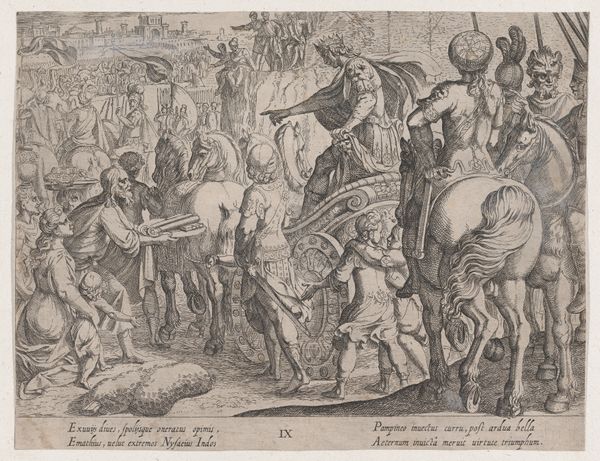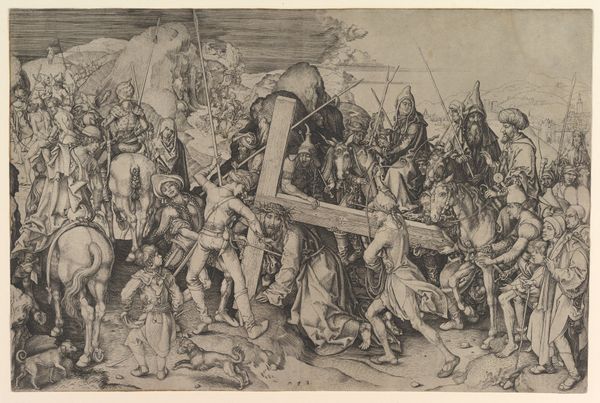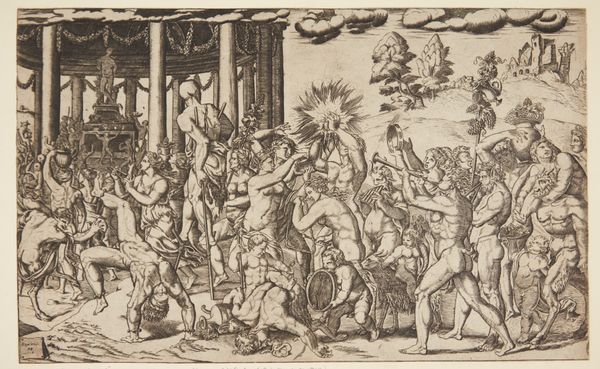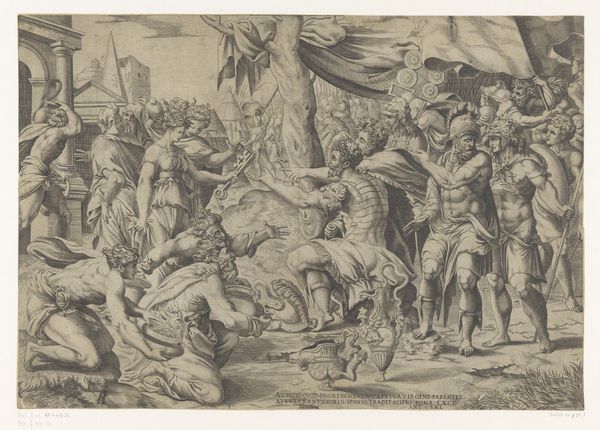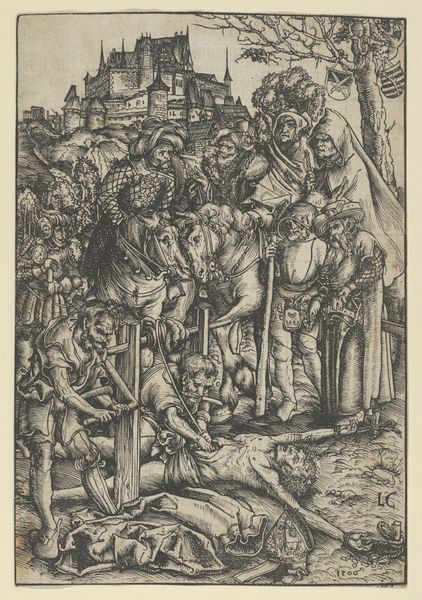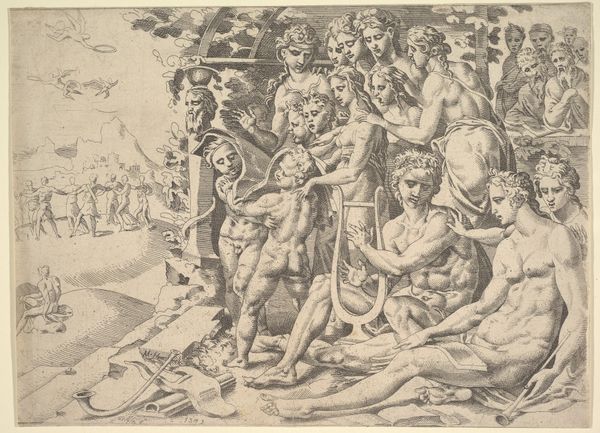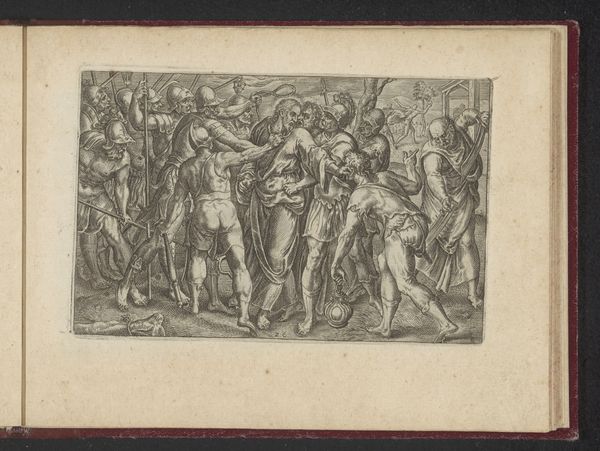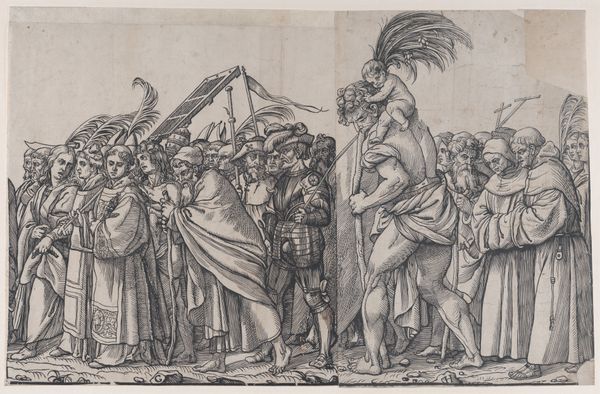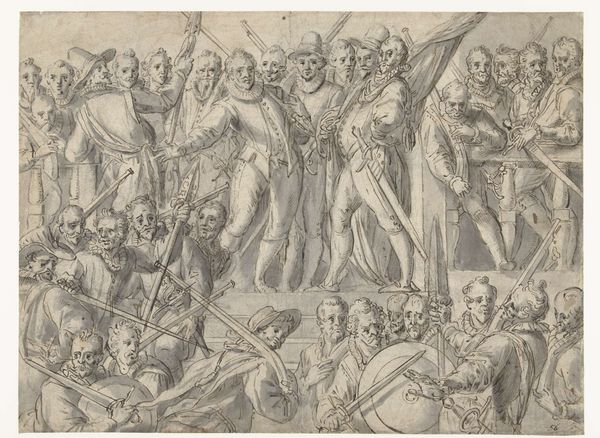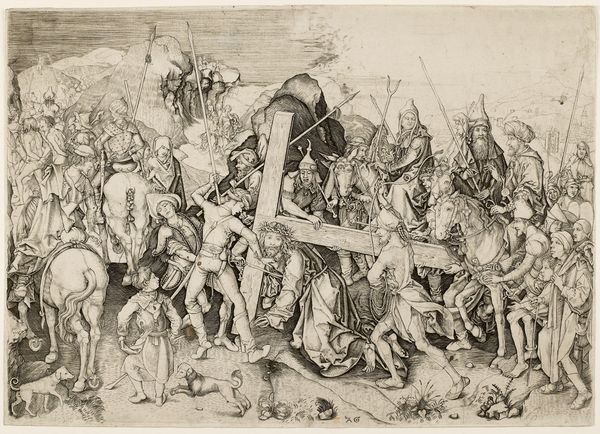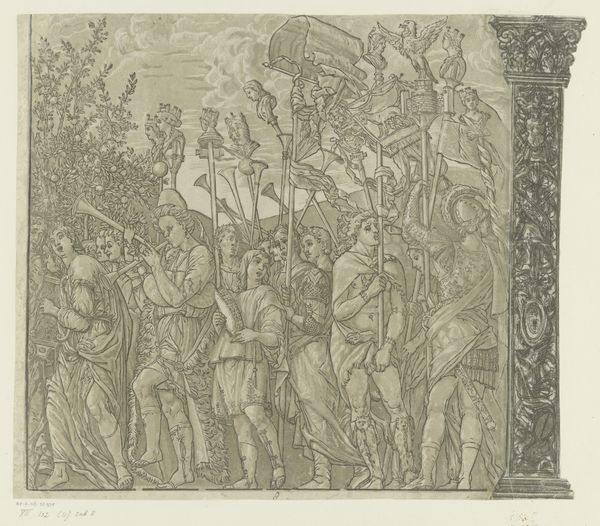
drawing, ink, pen, engraving
#
drawing
#
ink drawing
#
pen drawing
#
pen illustration
#
pen sketch
#
war
#
figuration
#
11_renaissance
#
ink
#
pen
#
history-painting
#
engraving
Dimensions: height 265 mm, width 454 mm
Copyright: Rijks Museum: Open Domain
Curator: This detailed pen and ink drawing by Antonio Fantuzzi, titled "Scène uit de Dacische Oorlogen," created sometime between 1537 and 1550, immediately pulls you into a scene of organized chaos. Editor: Organized chaos is right! My first impression is how incredibly busy it is. The composition seems crammed with figures, creating a dynamic, almost frantic energy across the whole picture plane. Curator: Indeed. While the Renaissance was focused on naturalistic ideals, these warring figures and symbolic landscapes draw deeply on much older memories of civilization versus barbarism. Look at how the trees twist and seem to fight the advancing armies, as though they too were characters of the war. It harkens back to Greco-Roman struggles. Editor: That’s fascinating! To me, the tangled woodland evokes an atmosphere more than a literal space. Notice how Fantuzzi’s use of line creates this remarkable textural richness. The ink strokes almost vibrate; he doesn’t outline shapes, but defines everything by hatching and cross-hatching, creating intense darks and a kind of implied form that adds a spatial ambiguity. Curator: A kind of uncertainty about space perfectly echoes how this print evokes timeless battles. Fantuzzi clearly wants us to ponder broader notions of conflict and survival, and perhaps to interpret familiar stories from old perspectives. Observe too how all of the fighters wield the same round shield – that is no coincidence; but represents that a people is united and unified by its armor and symbols of warfare. Editor: Now I see the power of the uniformity you point out! Though, for all the violence, the image also communicates this remarkable sense of forward movement through visual patterns, directing my gaze left to right to build anticipation about what is happening as the conflict intensifies. Curator: Exactly. While other images might illustrate great historical battles, this image wants you to consider that stories, heroes, and symbols travel, morph, and repeat across history to guide the ways cultures imagine both their pasts and their futures. Editor: It seems the technique serves a historical point then. Overall, I now feel there is a masterful level of integration, as the form beautifully strengthens the expression of his enduring vision of conflict and time. Curator: An enduring and turbulent legacy to which Fantuzzi's technique seems perfectly attuned!
Comments
No comments
Be the first to comment and join the conversation on the ultimate creative platform.

